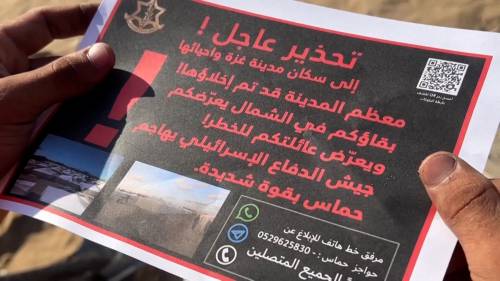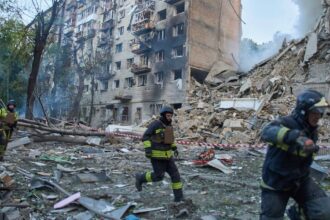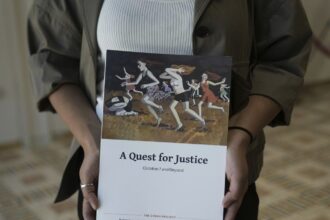The narrow roads leading south from central Gaza have transformed into rivers of humanity this week as thousands of Palestinians flee their homes, carrying what little they can salvage. Entire families trudge forward under a sky periodically lit by Israeli airstrikes, their faces etched with exhaustion and uncertainty after Israeli forces dropped evacuation leaflets across densely populated neighborhoods.
“We have moved four times already. Each time they tell us we’ll be safe, and each time the bombs follow,” said Mahmoud Khalil, 43, clutching his youngest child while shepherding his family toward Khan Younis. “We are tired—not just physically, but in our souls.”
The Israeli military has expanded evacuation orders to include several districts in central Gaza, including parts of Deir al-Balah and the sprawling Nuseirat refugee camp, according to humanitarian agencies operating in the region. These orders come as Israel intensifies its military campaign against Hamas, the militant group governing Gaza.
Military officials claim these evacuation notices aim to minimize civilian casualties before operations targeting what they describe as Hamas infrastructure. However, UN officials have repeatedly questioned where Palestinians can realistically go in a territory measuring just 365 square kilometers—roughly twice the size of Toronto—with most areas already overcrowded with displaced people.
“Each new evacuation compounds an already catastrophic humanitarian situation,” said UN Relief Chief Martin Griffiths during an emergency briefing. “We’re seeing medical facilities overwhelmed, water systems destroyed, and shelter spaces that exceeded capacity months ago.”
The latest displacement wave affects areas previously designated as humanitarian safe zones, forcing Palestinians to seek refuge in increasingly overcrowded southern enclaves where basic resources are severely strained. Satellite imagery shows vast tent encampments spreading across formerly open areas near Rafah and western Khan Younis.
Healthcare workers report that the constant movement has devastated Gaza’s medical infrastructure. “We’re seeing unprecedented levels of malnutrition and disease spread,” Dr. Amira Hassan told CO24 via satellite phone from a field hospital in southern Gaza. “People arrive dehydrated, exhausted, and traumatized—especially children, who are showing alarming signs of psychological distress.”
International aid organizations continue struggling to deliver essential supplies. The World Food Programme reports that only a fraction of needed food aid has entered Gaza since October, while medical supplies remain critically low. Fuel shortages have crippled water pumping stations and sewage treatment plants, creating conditions for disease outbreaks.
The conflict, now in its ninth month, has displaced nearly the entire population of Gaza at least once. Many families have been forced to relocate multiple times as the front lines shift. The UN estimates that over 80% of Gaza’s housing stock has been damaged or destroyed, creating a housing crisis that will take years to address.
Diplomatic efforts to secure a ceasefire remain stalled despite repeated international calls for an end to hostilities. Meanwhile, regional tensions continue mounting, with concerns about a wider conflict growing after recent exchanges of fire across the Israel-Lebanon border and attacks in the Red Sea disrupting global shipping routes.
As darkness falls over Gaza each night, those newly displaced face the immediate challenge of finding shelter and safety. For people like Fatima Abdelrahman, a 67-year-old grandmother now responsible for five grandchildren after losing her son and daughter-in-law, the future seems impossible to imagine.
“We Palestinians have always been resilient, but there are limits to what humans can endure,” she said, sitting beneath a makeshift tarpaulin shelter. “I don’t know how much longer we can survive like this.”
As this humanitarian crisis deepens by the day, a question hangs over the international community: at what point does the collective failure to protect civilian populations become an indictment of our shared humanity?










